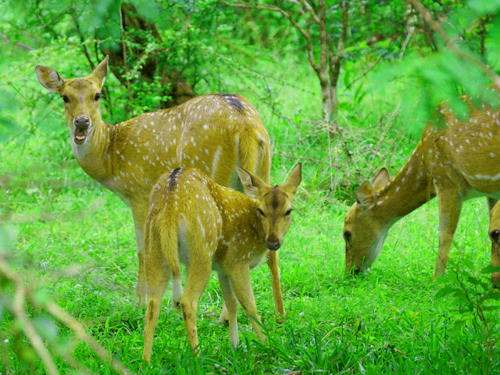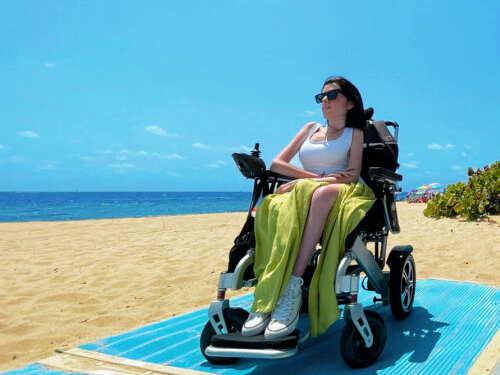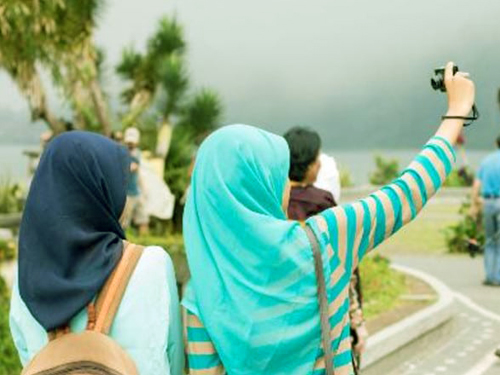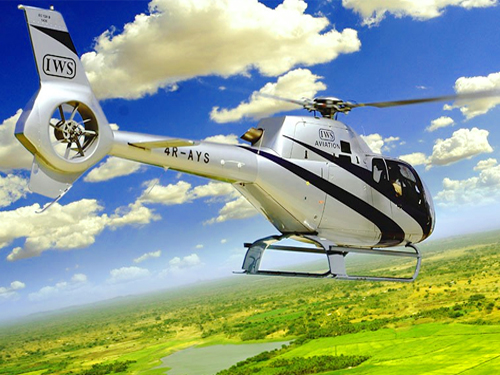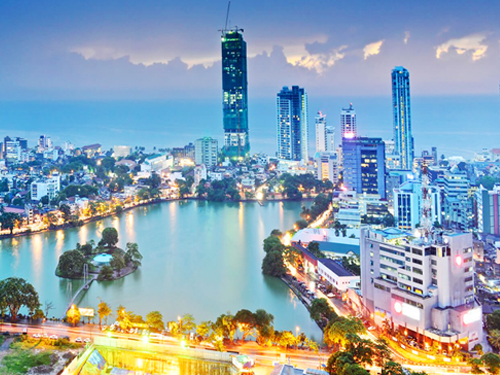Best Location Bird Watching Tours in Sri Lanka
The Anawilundawa Bird Sanctuary can be found in Sri Lanka's North-Western Province, between Chilaw (the capital) and Puttalam. Anawilundawa's uniqueness is its proximity to three ecosystems: the sea, the mangroves, and fresh water tanks. It is one of six RAMSAR Wetlands located in Sri Lanka. It is a unique ecological setting that has allowed hundreds of bird species to nest and breed in this area.
Anawilundawa Bird Sanctuary is located on 1,397 hectares forest land. It consists of nine tanks. Six giant man-made cascading tanks are Pinkattiya Maradansola Anawilundawa Mayyawa Surawila and Vellawali. Three secondary tanks connect with each other and work as one unit. These tanks are used to store water for cultivation and irrigation. They also serve as natural habitats and refuges for 150 waterbird species, along with a few threatened Fish, Amphibians and Mammals.
A large breeding colony is found here of Herons, White Ibises, Great Cormorants, White Ibises, Egrets, Stalk, Pheasant Tailed Jaguara, and the Purple Swamp Hen. There are 20 species of mammals that have been found here. This includes the Rusty Spotted Cat, Fishing Cat and Indian Otter. While most endemic and resident birds are easily observed throughout the year, migrating birds should be seen between October and April. Bird watchers and nature enthusiasts love Anawilundawa Bird Sanctuary. They come here to see rare birds and take great photos.
Anawilundawa Bird Sanctuary does not have a specific opening or closing time. However, it is best to visit between 6 AM and 8 AM and 4 PM to 6PM for the best bird watching opportunities.These tanks are used to store water for cultivation and irrigation. They also serve as natural habitats and refuges for 150 species waterbirds and a few threatened Fish, Amphibians and Mammals.
A large breeding colony is found here of Herons, White ibis and Great cormorants, as well as the Egret, Stalk and Pheasant-tailed jacna. There are 20 species of mammals that have been documented here. This includes the Rusty-spotted cat, Fishing Cat, Rusty loris, Slender Loris, Toque monkey, and the Indian otter. The majority of endemic and resident birds are easily observed throughout the year, while the migrants can only be seen between October and April.
Anawilundawa Bird Sanctuary is an excellent choice for bird watchers and nature enthusiasts. They are here to see rare birds, observe their behavior in the natural environment, and take great photographs.
Kalpitiya and Negombo are the nearest major touristic destinations to Anawilundawa Bird Sanctuary, which is approximately 1 1/2 hours away.
Bundala National park is a maze of waterways and lagoons that sparkle like gold under the evening sun. This paradise is home to thousands upon thousands of colorful birds, from tiny bee-eaters to massive open-billed stalks. It is a sanctuary for wetlands of great importance, and has been recognized under the Ramsar Convention on Wetlands. There are many large mammals, including between 15-60 elephants depending on the month (December is the best).
It is home to almost 200 species of birds. They can be found within the park's 62-km area. Many come from Siberia or India, and spend the winter here. The peak season is December to March. The park is also home to the greater Flamingo. Up to 2000 birds have been seen here.
Bundala is home to giant squirrels, civets and a lot of crocodiles. Four of Sri Lanka's five marine turtle species (olive ridley green, leatherback, loggerhead, and leatherback) lay eggs along the coast between October and January.
Bundala extends nearly 20km along the coast between Kirinda, Hambantota and Hambantota. The entrance can be found west of the 251km marker. The main gate has a visitor center with views of the marshes. You can also see the skeleton and bones of a terrifyingly large crocodile.
Bundala National park's climate is dry and hot. The average temperature is 27°C, but the annual rainfall ranges from 900mm to 1300mm. The dry season' is between May & September.Bundala National park covers an area of 6216. It consists primarily of dry thorny shrublands, marshes and four brackish lakes. The terrain is flat, with the coast bordered by sand dunes.
Bundala can be found close to the wildlife hotspot Yla NP. It is located 15 km east of Hambantota, and 16 kilometers west from Tissamaharama.
Kalametiya, a coastal wetland with a rich bio-diversity is located on the beautiful southeastern coast Sri Lanka in the Hambantota district. It is located between Rekawa, Ussangoda and forms the "Ruk" area, which includes numerous coves, lagoons and rocky outcrops. The coastline stretches from Tangalle to Hambantota.Similar to Bundala National Park in Sri Lanka, this sanctuary is home to a variety of birdlife. It has coastal lagoons, mangrove swamps and scrub jungles.
The original reserve covered 2500 hectares. However, some areas were canceled in 1946 due to opposition from local residents. However, a significantly smaller area was designated as a sanctuary in 1984. Kalametiyawas was first declared a wildlife sanctuary on March 1, 1938.
Kalametiya lagoon, a brackish water body located at 215 km on the Colombo-Tissamaharama Road is approximately. It is located halfway between Tangalle and Ambalanntota, and adjoins the Hungama village. This lagoon is surrounded by extensive reed beds, Mangrove forests and other wetland tree forests as well as salt marshes. Its waters are separated by a narrow strip on the beach, and only flow to it through an outlet that occasionally closes.Kalametiya Bird Sanctuary is a small area of mangroves and lagoons along the coast that are rich in marine and other birds. It can be viewed from November through March.
Large lakes in the dry zone attract a lot of ducks. However, wetlands like weerawila and kalamatiya are home to larger birds such as spoonbills, ibis, spoonbills, egrets, spoonbills, pelicans, and storks. A large number of migrants arrive on the Island around mid-August. These birds are sandpipers or stints, plovers, and terns. They fly over from North India Siberia, Scandinavia, and Western Europe and settle on the coasts.
Lagoons and mangrove swamps attract a wide range of winter migrants birds. There are 4 species of nationally endangered birds and 38 species globally threatened reptiles.The Kalametiya Bird Sanctuary is a great place to visit, to either see threatened wildlife or birdlife before they disappear completely, or to support their preservation.
It is located 21 km east of the beach resort Tangalle. You can take a quick detour to Yala/Kumana if you are visiting the southern beaches. It is located just 3.5km from the Tangalle-Hambantota main highway
Sinharaja Rain Forest is part of a biodiversity hotspot in the south west lowland zone of Sabaragamu and Southern Provinces of Sri Lanka. Sinharaja rain forest, the country's last remaining area of primary tropical rain forests, is a vital one. It contains 11,000 ha of primary and secondary forests. The narrow strip of rolling land is made up of a number of valleys and ridges. Many of these trees are rare and endemic to Sinharaja Forest, with more than 60% being endemic. The reserve contains a lot of endemic wildlife, including birds, but it also houses over half of Sri Lanka's endemic butterflies & mammals, as well as many types of insects, reptiles, and rare amphibians. Sinharaja Forest was designated a UNESCO World Heritage Site in 1988 by UNESCO under the name Sinharaja Forest Reserve. Sinharaja Forest was the first to be recognized as the island's only significant patch of tropical rain forest.
In 1978, UNESCO designated Sinharaja forest as a biosphere preserve. The site was almost declared a National Heritage Wilderness Area, recognizing the importance of maximum protection. It is a habitat for endangered and rare species, and an exceptional site to study the evolution of biological life. Sinharaja Forest is the best spot to observe mixed species bird flocks. A study on mixed species bird flocks revealed that 42 birds are found in each flock, making it the largest mixed species bird family in the world. Sinharaja forest's mixed species bird flock study has been ongoing since 1981. It is the longest-running bird flock study in the world.
Sinharaja forest is composed of a series continuous ridges that run roughly in an East-West direction. It lies between the tributaries Kalu Ganga (North) and the Gin Ganga (South). There are four main routes to Sinharaja. From the northwest is the Kalawana–Weddagala, Rakwana–Morning side-estate road, from the north, and the Hiniduma–Neluwa from the south, respectively. Deniyaya– Pallegama from the South-east is the Deniyaya–Pallegama road. The kalawana–Weddagala route is the shortest and most convenient for visitors travelling from Colombo.
Sinharaja is not located near any of the most popular attractions on the Island. Therefore, you will need to add more days to your itinerary in order to visit Sinharaja. There are three entrances to the forest reserve. The most popular is the Kudawa entry Ratnapura (52.5km).
The Kumana Bird Sanctuary is a paradise for birdwatchers! It is located 408km from Colombo, on the southeastern coast. Access to the Park can be made via Beragala, Koslanda, or the Uduwalawe-Tanamalvilla route.Kumana National Park's Kumana Bird Sanctuary was established in 1938. It is one of the most important breeding and nesting grounds for birds in Sri Lanka. The Kumana Bird Sanctuary has recorded 255 of the 400 bird species in Sri Lanka.
Kumana National Park's vegetation is mostly tropical dry zone forest. It covers an area 35,665 ha. The western boundary is marked by the Kumbukkan Oya. To the south, is the stretch of coast that runs to Panama.The park's rich bird life is supported by a 200-hectare mangrove swamp called the "Kumana Villu", and many tanks and lagoons that are scattered throughout the park, where thousands of birds nest. The swamp is home to thousands of birds every year, from April through July.
Kumana, also known as Yala-East, is the eastern corner in the Yala Strict Nature Reserve. This is not as popular as the Yala. It is also less crowded. It is located just 27km to the west of Arugambay.
Udawatta Kele Sanctuary, or the Royal Forest Park of Kandy, is located on the hillside just behind the Dalada Maligawa (Temple of the Tooth Relic). The forest covers 257 acres. It is a vital Bio reserve that provides a bio-resource for Kandy City. The area around Kandy was once a Rain Forest. Human settlements occurred during King Panditha Parakramabahu's era (1302-1326 AD). King Wickramabahu established Kandy as his Kingdom in 1371 AD. "Senkadagala" was the name Kandy used during this time. Senkanda, a Brahmin who lived in Udawattakele's cave during the Kandyan Kingdom, gave this name. This forest area was known as the "Uda wasala watta", or the "Upper Palace Garden" during the Kandyan kingdom. It was not accessible to the public. This forest area began to lose its pristine condition after the fall of the Kandyan kingdom in 1815.
Human activities caused the forest to deteriorate. In 1856, the Government designated it as a Forest Reserve. Later, in 1938, it became a sanctuary. This forest's catchment areas are the main source of water for Kandy Lake. This forest provides the Kandy with the necessary air purification activity. It is also surrounded by many hills.
The forest is rich in vegetation, including canopy, sub-canopy and an underground layer. Because of the dense plant life, sunlight cannot reach the soil surface. The underground layer is mostly made up of seedlings from the canopy layer species and creepers. It reaches the top of the caopy layer tree. The forest is home to a huge 200-300 year old "Pus Wela" or "Entada pusaetha" liana.
The most important locations in Udawatta Kele include the The water Pond and Highest peak "Kodimale", The Senkanda Cave and the Garrison Cemetery. The forest reserve also contains many Buddhist temples, hermitages, and sanctuaries.Some Tree species that can be found in the forest include 'Acronychia pedunculata" (Ankenda), 'Adenanthera pazina' (Madatiya), 'Adenanthera pedunculata’ (Ankenda), 'Adenanthera pedunculata), 'Adenanthera pedunculata’ (Madatiya), kekuna), Antidesma bunna (Karawala Kebella.
The Makandawa Forest Reserve in Sri Lanka is home to some of the most beautiful and unspoiled forests. It is located close to Kithulgala village, which is one of the most popular destinations for adventure sports in Sri Lanka. It is home to a variety of rare and endemic fauna and flora. The Belilena Cave, one of Sri Lanka's most treasured ancient treasures, is also found in the reserve. Makandawa is also the same rainforest that was used in the World War II film, "The Bridge over the River Kwai".
The secondary lowland rainforest is home to many interesting features, including crystal clear natural rock pools, waterfalls and challenging trails that wind through thick tropical rainforest. It is an ideal place for hiking, whitewater-rafting, birdwatching and butterfly watching. Kithulgala also offers a variety of adventure sports.
There are many rare species that can be seen here for those who are interested in the fauna and flora. There are many rare species, including the Asoka Barb fish, Black Ruby Barb, Black Barb, Black-lined Barb, and the Stone Sucker. The Red Slender Loris, a mammal that is most often seen is the Grizzled–tailed giant squirrel.
The Makandawa forest gets its rainfall mostly during the monsoon season. The Kelani River is wild and wide during these seasons, making it difficult to cross without a boat. Locals often use a traditional dugout canoe equipped with an outrigger for this purpose.

 Safe Travels
Safe Travels Français
Français Deutsch
Deutsch עִברִית
עִברִית Italiano
Italiano Nederlands
Nederlands Polski
Polski Pусский
Pусский Español
Español






